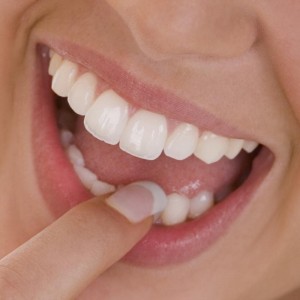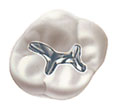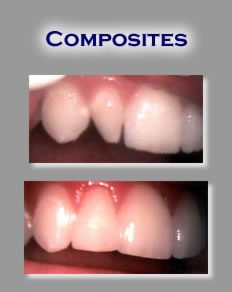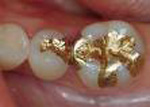When you get a tooth filling done at your dentist, do you not wonder about the ingredients of the dental filling he/she is putting into your mouth? Each dental filling has its own composition and the deciding factors for the type of dental filling you will get are the size of the cavity filling or condition of the tooth, dental filling cost and the availability of the material in the dental office.
There are a variety of dental materials available in the market with many manufacturers producing them; therefore ingredients of dental fillings may differ from company to company. This article will list the basic ingredients one could find in a specific dental cavity filling material for ingredients can be constantly added or modified as technology improves.
Available types of dental restorative materials
- Dental amalgam
- Composite resin
- Glass ionomer cements
- Hybrid materials of composite and glass ionomer
- Dental porcelain
- Cast gold and other alloys
Dental amalgam
By mixing together mercury with a powdered silver-tin alloy, a plastic mass that can be packed into a cavity preparation is called dental amalgam. Despite toxicity scares and the introduction of strong composites, amalgam is still widely used mainly because of its ease of handling. However certain countries have banned dental amalgam for environment reasons.
Composition of dental amalgam
Basic constituents
- Silver – it is used to increase strength and expansion of the material
- Tin – it is used to decrease expansion and strength, and to increases material setting time
- Copper – it is used to tie up to tin; reduce tarnish and corrosion, creep and marginal deterioration; and increase strength
- Mercury – it is used to activate reaction of the material
- Zinc – it is used to decrease oxidation of other elements, have better clinical performance, and to produce less marginal breakdown of fillings
- Indium – decreases surface tension, reduces amount of mercury necessary, reduces emitted mercury vapor
- Palladium – it is used to reduce corrosion and produce greater luster
Other constituents
Dental composite resins
The modern tooth-colored composite resin is a mixture or resin and particulate filler. Newer developments include hydroxyl ion releasing composites that releases fluoride, hydroxyl, and calcium ions to counteract acid demineralization during low pH in the area; also the use of fiber reinforcement to fabricate posts and cores as well as bridge or splints.
Composition of composite resins
- Resin – most composite resins are based on a modified methacrylate or acrylate monomer, either Bis-GMA (addition product of bisphenol A and glycidylmethacrylate with a diluents monomer,  tri-ethylene glycol dimethacrylate (TEGMA)
- Filler – quartz, fused silica, glasses such as aluminosilicate and borosilicate, or zirconia with silane coupling agent that bonds the filler to the resin. Addition of fillers improves the performance of composites.
Glass ionomer cements
Glass ionomer cements are unable to match the aesthetics and abrasion resistance of the composite resins. However they are useful for their adhesiveness and fluoride-releasing properties.
Composition of glass ionomer cements
- Powder – sodium alumino silicate glass, fluoride
- Liquid – maleic or acrylic acid copolymer, tartaric acid to lengthen working time
Hybrid materials of composite and glass ionomer
Composition of compomers
This material consists of a single hydrophobic resin filled with ion-leachable aluminosilicate glass particles
Composition of resin-modified glass ionomers
- Powder – sodium alumino silicate glass
- Liquid – polymerisable methacrylate resin, polyacid, hydroxyethylmethacrylate or HEMA, water
Composition of giomers
This material consists of composite resins with pre-reacted glass-ionomer (PRG) particles made of fluorosilicate glass.
Composition of ormocers (Organically Modified Ceramics)
This material consists of of organic polymers, ceramic glasses and polyvinylsiloxane.
Composition of ceromers (Ceramic Optimized Polymer)
This material consists of a paste containing barium glass, spheroidal mixed oxide, ytterbium trifluoride, and silicon dioxide in dimethacrylate monomers (Bis-GMA and urethane dimethacrylate).
Dental porcelain
Dental porcelain (also known as dental ceramic) actually more closely resembles a glass and can be used for crowns, veneers and inlays.
Composition of porcelain
- Silica
- Feldspar
- Glasses
- Kaolin – for strength and color
- Quartz – for strength and translucency
- Metal oxides – for pigment and opalescence
- Alumina – as strengthening inserts and crack-resistant material
- Leucite – it is used to avoid thermal stresses during firing, and increase flexural strength
Cast gold and other alloys
An alloy is a mixture of two or more metallic elements. Dental casting alloys essentially contain a corrosion-resistant metal (usually gold) with the addition of other constituents to avoid corrosion in the mouth.
Composition of high-gold alloy
- Gold
- Palladium or platinum – it is used to raise melting temperature, and decrease the coefficient of expansion of gold
- Tin and indium – it is used produce bonding between ingredients
Composition of low-gold alloy
- Gold
- Palladium
- Silver – it is used to increase hardness and strength
- Indium and tin
Composition of silver-palladium alloy
- Palladium
- Indium
- Silver
- Gold
- Zinc – it is used to prevent oxidation of other metals
Composition of nickel-chronium alloy
- Nickel
- Chromium
- Molybdenum
- Beryllium
- Nickel, cobalt, chromium




